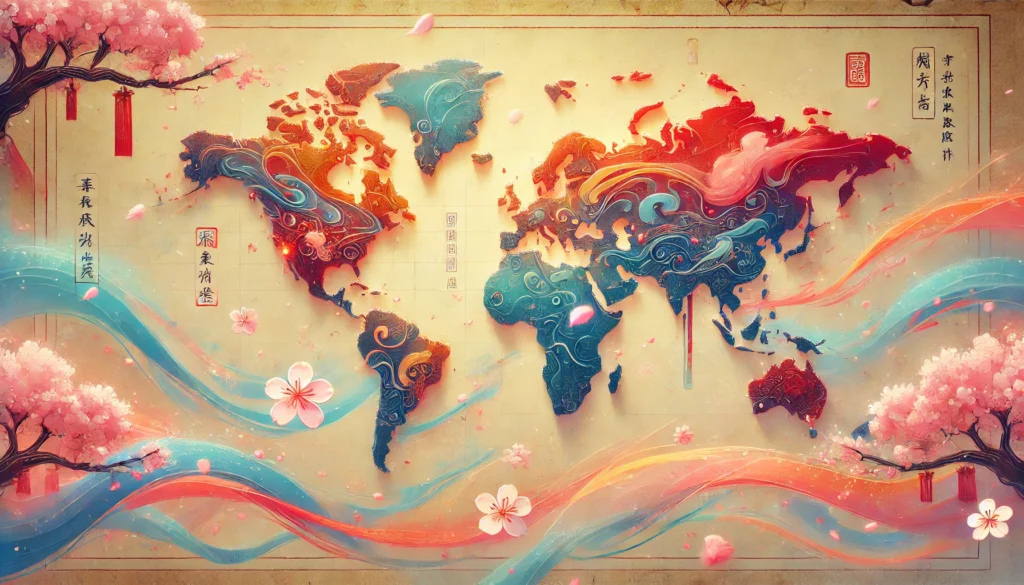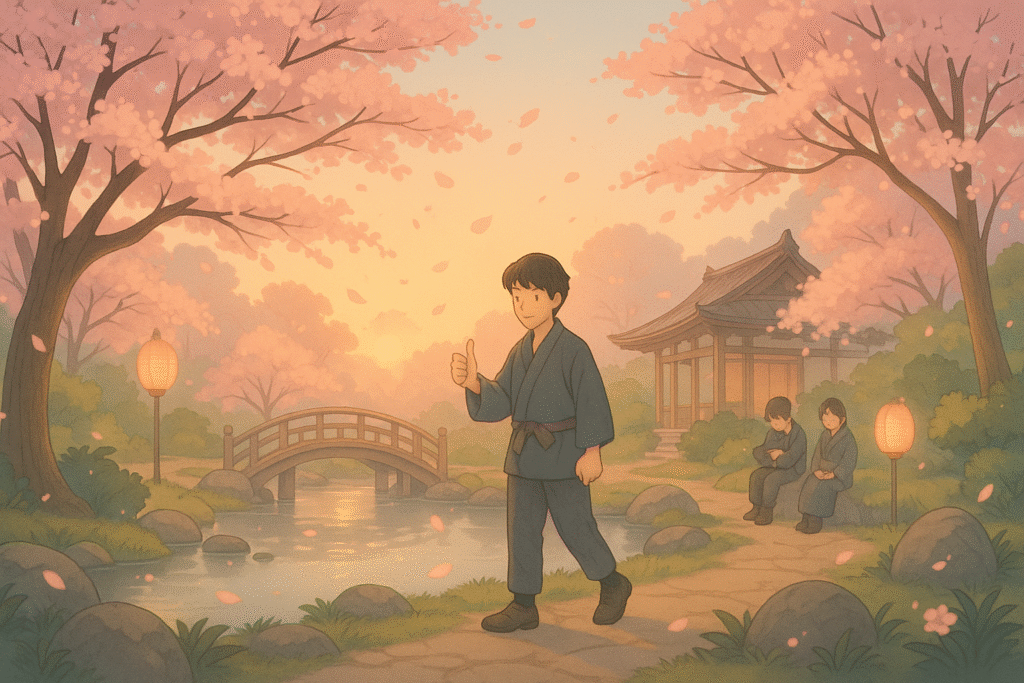Have you ever tried introducing yourself to someone in Japanese, only to stumble when mentioning where you’re from? Or perhaps you’re planning a trip to Japan and want to discuss world events with locals? Understanding how to say countries in Japanese is an essential skill for meaningful conversations, travel preparation, and building cultural connections.
In this comprehensive guide, we’ll explore how countries in Japanese are named, the fascinating patterns behind these names, and provide you with practical tools to remember them easily. Whether you’re a beginner or at an intermediate level, mastering country names will significantly enhance your Japanese fluency.
Want to start learning Japanese right away?
Access our Free Study Guides with grammar explanations, vocabulary lists, and study tips. All at no cost.
How Countries in Japanese Are Written and Pronounced
Unlike English, which uses a single alphabet for all words, countries in Japanese can be written in three different ways:
The Three Writing Systems for Countries in Japanese
- Katakana (カタカナ) – Most common for foreign country names
- Kanji (漢字) – Used for certain Asian countries and historical names
- Hiragana (ひらがな) – Occasionally seen as readings for kanji country names
This variety may seem challenging at first, but it actually provides helpful context clues about a country’s relationship with Japan. For example, countries with kanji names typically have longer historical connections with Japan than those written in katakana.
Pattern Recognition: The Key to Remembering Countries in Japanese
One fascinating aspect of learning countries in Japanese is discovering the patterns that make memorization easier. For instance:
- Many European countries end with ~ア (a) sounds: フランス (Furansu – France), ドイツ (Doitsu – Germany), イタリア (Itaria – Italy)
- Many American countries include ~リカ in their names: アメリカ (Amerika – America), コスタリカ (Kosutarika – Costa Rica)
- Asian countries frequently use kanji: 中国 (Chūgoku – China), 韓国 (Kankoku – South Korea), 日本 (Nihon/Nippon – Japan)
Essential Countries in Japanese: The Names You Need to Know
Let’s explore some of the most important country names you’ll encounter in conversations, news, and travel situations:
Major World Powers in Japanese
| English | Japanese | Romaji | Notes |
|---|---|---|---|
| United States | アメリカ / 米国 | Amerika / Beikoku | Both terms are common |
| China | 中国 | Chūgoku | Uses kanji meaning “middle country” |
| Russia | ロシア | Roshia | |
| United Kingdom | イギリス / 英国 | Igirisu / Eikoku | Both terms are used |
| Japan | 日本 | Nihon / Nippon | Both pronunciations are correct |
When introducing yourself, you might say:
「私はアメリカから来ました」 (Watashi wa Amerika kara kimashita) “I came from America”
European Countries in Japanese
Europe’s diverse nations have equally diverse names in Japanese:
- フランス (Furansu) – France
- ドイツ (Doitsu) – Germany
- イタリア (Itaria) – Italy
- スペイン (Supein) – Spain
- スウェーデン (Suwēden) – Sweden
If discussing European travel plans, you might say:
「今年の夏、フランスとイタリアに行く予定です」 (Kotoshi no natsu, Furansu to Itaria ni iku yotei desu) “This summer, I plan to go to France and Italy”
Asian Countries in Japanese
Japan’s neighbors have names that often reveal historical connections:
- 韓国 (Kankoku) – South Korea
- 北朝鮮 (Kitachōsen) – North Korea
- 台湾 (Taiwan) – Taiwan
- タイ (Tai) – Thailand
- インド (Indo) – India
When discussing Asian cuisine, you might comment:
「タイ料理は辛いですが、美味しいです」 (Tai ryōri wa karai desu ga, oishii desu) “Thai food is spicy, but delicious”
Unique Aspects of Countries in Japanese
Learning countries in Japanese reveals interesting linguistic and cultural patterns that can enhance your understanding of the language.
Multiple Names for Some Countries
As you may have noticed, some countries have multiple Japanese names:
- America: アメリカ (Amerika) and 米国 (Beikoku)
- Great Britain: イギリス (Igirisu) and 英国 (Eikoku)
- Australia: オーストラリア (Ōsutoraria) and 豪州 (Gōshū)
These alternative names typically appear in more formal contexts like news reports or academic writing, while the katakana versions are more common in everyday conversation.
Cultural Context in Country Names
Some country names in Japanese carry historical or cultural significance:
- 中国 (Chūgoku) for China literally means “middle country,” reflecting China’s historical self-perception as the center of civilization
- 米国 (Beikoku) for America uses the kanji for “rice,” adopted as a phonetic approximation of “America” but creating an interesting symbolic connection
- 日本 (Nihon/Nippon) for Japan means “sun origin,” reflecting Japan’s position east of China and its identity as the “Land of the Rising Sun”
Understanding these nuances can help you appreciate Japanese historical perspectives and cultural connections when discussing countries in Japanese.
Love Japan? Stay in the Loop!
Hi, I’m Jesse! Join 100+ learners and get my best Japanese learning tips straight to your inbox.
Practical Tips for Learning Countries in Japanese
To master countries in Japanese more effectively, try these proven strategies:
1. Group Countries by Regions and Patterns
Instead of memorizing isolated names, group countries in Japanese by:
- Geographic regions (European, Asian, etc.)
- Similar ending sounds (~ア, ~ン, etc.)
- Writing system (kanji vs. katakana)
This approach helps your brain recognize patterns and strengthens memory associations.
2. Practice with Maps and Visual Aids
As mentioned in our guide on how to study without a teacher, visual learning can be extremely effective:
- Label a world map with countries in Japanese
- Use color-coding for different writing systems
- Create flashcards with country flags and Japanese names
3. Incorporate Countries into Conversation Practice
Using countries in Japanese within practical contexts helps solidify your knowledge:
- Practice introducing yourself: 「私はカナダから来ました」(I’m from Canada)
- Discuss travel plans: 「いつかブラジルに行きたいです」(Someday I want to go to Brazil)
- Talk about international news: 「フランスでオリンピックが開催されます」(The Olympics will be held in France)
Common Mistakes
When studying countries in Japanese, be aware of these common pitfalls:
1. Pronunciation Challenges
Some country names have unexpected pronunciations:
- ドイツ (Doitsu – Germany): Not a direct phonetic translation
- イギリス (Igirisu – United Kingdom): The “gi” is pronounced with a hard g
- エジプト (Ejiputo – Egypt): The “ji” sound differs from English
Practice with native audio resources or check out our guide on learning Japanese through anime for authentic pronunciation examples.
2. Confusing Similar Country Names
Some countries in Japanese sound similar:
- オーストリア (Ōsutoria – Austria) vs. オーストラリア (Ōsutoraria – Australia)
- スウェーデン (Suwēden – Sweden) vs. スイス (Suisu – Switzerland)
Creating memory aids or stories can help distinguish these easily confused pairs.
Q&A: Countries in Japanese
Q: How do you say “country” in Japanese? A: The word for country in Japanese is 国 (kuni).
Q: Why are some countries written in kanji while others use katakana? A: Countries with long historical relationships with Japan often have kanji names, while more recently contacted nations typically use katakana.
Q: Do Japanese people use English country names in conversation? A: Generally no. Japanese speakers consistently use Japanese country names in conversation, though they may recognize English country names.
Q: How can I practice using countries in Japanese? A: Try reading Japanese news, labeling maps, or describing your travel experiences/plans in Japanese conversation practice.
Expanding Your Japanese Geography Vocabulary
Once you’ve mastered basic countries in Japanese, you can enhance your geographic vocabulary with:
- Continents: アジア (Ajia – Asia), ヨーロッパ (Yōroppa – Europe)
- Oceans: 太平洋 (Taiheiyō – Pacific Ocean), 大西洋 (Taiseiyō – Atlantic Ocean)
- Geographic features: 山 (yama – mountain), 川 (kawa – river), 島 (shima – island)
For more advanced language learning resources, including comprehensive vocabulary guides, visit our resources page where you can access free guides to accelerate your Japanese fluency journey.
Conclusion: Your World Expands with Countries in Japanese
Mastering countries in Japanese opens doors to more meaningful conversations, better comprehension of news and media, and deeper cultural connections when traveling. By understanding the patterns behind country names and practicing them in context, you’ll add an essential component to your Japanese language toolkit.
Whether you’re planning a trip to Japan or simply expanding your language skills, being able to discuss countries in Japanese demonstrates cultural awareness and linguistic versatility. Start with the major countries relevant to your interests, and gradually expand your geographic vocabulary.
What country would you most like to visit in Japan? Practice writing its name in Japanese in the comments below!
Want to learn more practical Japanese vocabulary? Check out our guide on how to talk about the weather in Japanese for another everyday conversation topic that will enhance your fluency.
Connect with Fellow Japanese Learners!
Ask questions, get study tips, and take part in weekly challenges. Join a community of motivated learners exploring both the language and culture of Japan!




